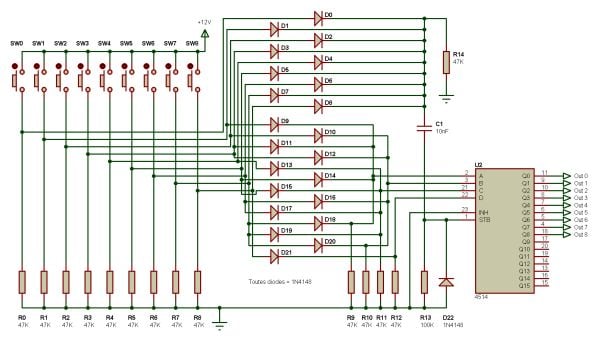Hi everyone,
I'm working on a project and I need to display a number from 1 to 20.
I would use two separate 7 segment display or a dual one.
The number displayed must be in relation from a BCD code.
I'm looking for the easiest way to do the job, with minimum components.
Could you help ?
Thanks in advance
I'm working on a project and I need to display a number from 1 to 20.
I would use two separate 7 segment display or a dual one.
The number displayed must be in relation from a BCD code.
I'm looking for the easiest way to do the job, with minimum components.
Could you help ?
Thanks in advance







